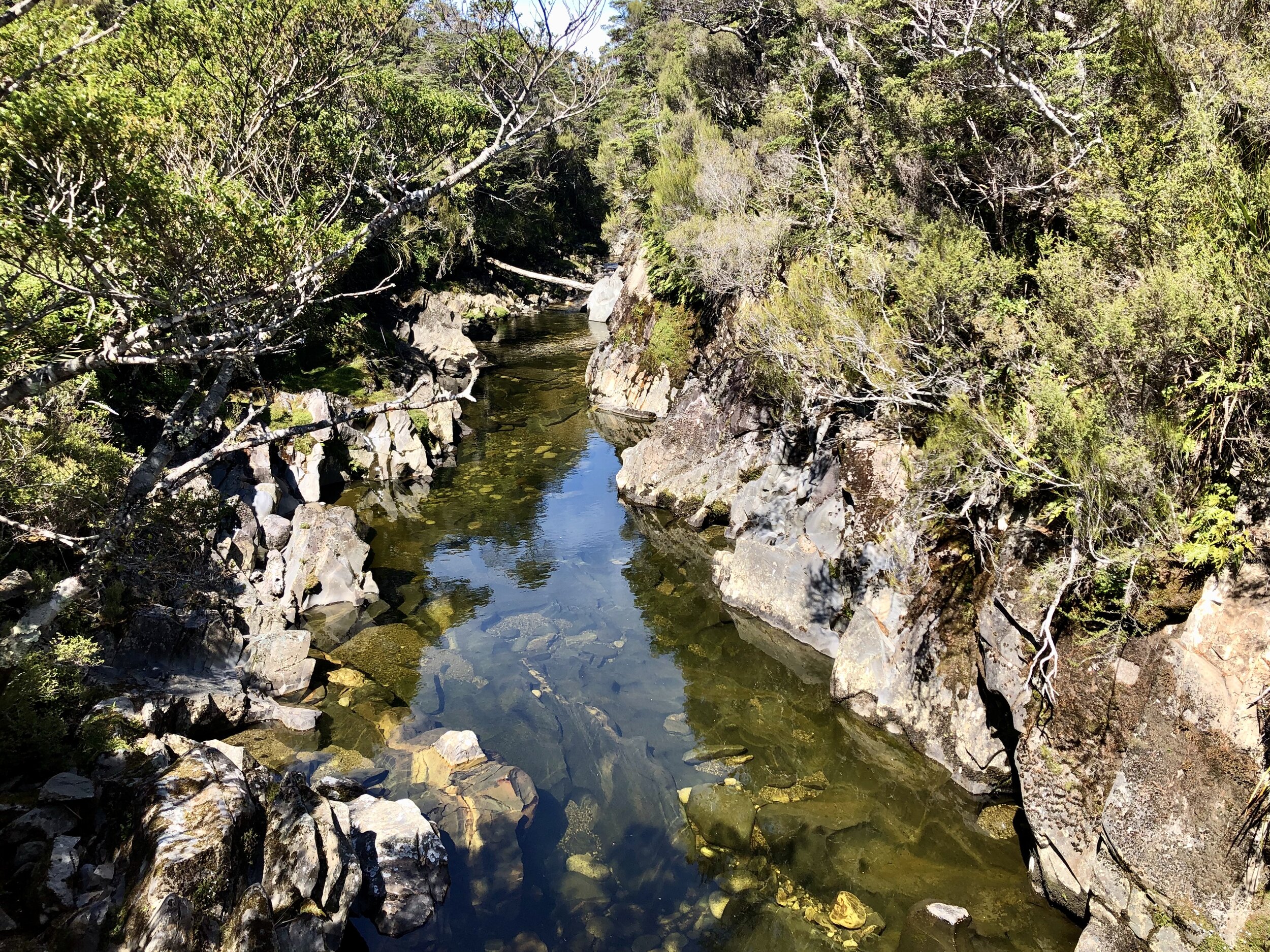Heaphy Track
The past 4 days and 3 nights were spent on the Heaphy Track, one of New Zealand’s “Great Walks,” 10 well-maintained tramping (hiking) and mountain-biking trails throughout both North and South Islands.
[Note: I was a little confused by this, but I think tramping and trekking are the same thing. Tramping is the New Zealand-specific word for “a person who walks for long distances in rough country for recreation,” (i.e., a crazy person). Trekking, according to my Apple dictionary, means to “go on a long arduous journey, typically on foot.” A hiker is a tramper’s littlest brother, as hiking simply means, “the activity of going for long walks, especially in the country or woods.” Nothing about rough country in that definition!]
AND TRAMPING IT WAS.
The km/miles/distances seemed to be a little wonky, so above is a real GPS map (not recorded by me, my watch died in the midst) of the entire Heaphy Track, beginning at Brown Hut and ending at Kōhaihai Shelter. The last 1/3 of the trek was right along the Pacific Ocean, which was a welcome site after a grueling few days. Those sandflies, though… I just want to put a quote here from the OG captain (OC), Cpt. Cook, when he explored this area many moons ago, 1773:
The most mischievous animal here is the small black sandfly which are exceedingly numerous and are so troublesome that they exceed everything of the kind I ever met with, wherever they light they cause a swelling and such intolerable itching that it is not possible to refrain from scratching and at last ends in ulcers like the small Pox.
Indeed, they are itchier then mosquitoes and really get you around the ankles. The only way to avoid them is to not stop moving, which makes stopping to catch your breath or appreciate the scenery a little tricky. However! I have discovered a miracle potion called “Bonjela,” a NZ mouth ulcer remedy that is supposed to work wonders on itchy sandfly bites? I am going to get some at the next pharmacy or supermarket I see.
And now,
Day 1: Brown Hut to Perry Saddle Hut (17.5km)
The Heaphy takes a little bit of planning. This shuttle got us from Nelson, NZ on the northern coast to the Brown Hut parking lot (about a 4 hour drive including some other stops), then another bus picked us up at the end of the Heaphy and dropped us off at Westport (about a 2 hour drive). Some people then took another bus back to Nelson, which makes for an insanely long day.
Day 2: Perry Saddle Hut to James Mackay Hut (24.2km)
In the above image you can see a small box on the bottom right corner. This is a stoat trap with poison bait. Don’t look up a picture of a stoat (Mustela erminea + 2 other species) — they are way too cute. They were introduced in the 1870s as a way to control the rabbit population, and while they did a good job of that, they also managed to hunt many bird species to extinction or near-extinction. There has been a massive effort to cull the stoat population in the national parks areas, which these chemicals help achieve (also known as 1080). Introduced rats (ship rats and Norwegian rats) have also become a nuisance, as baby birds are a favorite food source for the rats. Many bird species endemic to the islands have lost the ability to fly, thus making even easier prey to the stoats and rats. Lastly, introduced common brushtail possums have wreaked havoc on the local ecosystem. (Interestingly, possum wool is used here in combination with sheep wool! It’s advertised everywhere in yarn and clothing shops.) Possums were introduced in the 1830s to begin a fur trade. They also love baby bird snacks and the compete with native birds for leaves and fruits of trees. All in all, about 80% of New Zealand’s bird life is threatened by these three species, but the DoC (Department of Conservation) has done an excellent job of culling these introduced species and there is evidence that many bird populations are recovering. It is heartening to hear conservation success stories.
A brief respite at Gouland Downs Hut.
This is a weka bird (Gallirallus australis). They are so numerous on the trail that it’s hard to believe that their conservation status is vulnerable (one level beneath endangered), but I haven’t seen one anywhere else in NZ besides the Heaphy Track. They are sneaky little buggers. I watched one grab a woman’s cell phone and run away! (She got it back.) I watched another one grab a woman’s opened ziplock bag of snacks and run away with it upside so all the snack contents spilled out for the other weka to gobble up.
The boundary bench! Am still a little confused by this - one side (the side I am sitting on) says “West - Buller.” West refers to the West Coast Region, of the 16 total regions throughout NZ. Buller is one of the 3 districts within the WCR. The other side of the bench says “Nelson/Marl - East.” But those two eastern districts completely skip over Tasman??
Can some1 plz explain this 2me???
The huts provided by the DoC on the Great Walks are amazing. This one is James Mackay. There is no electricity, but there are bunk beds with nice mattresses, flush toilets, sinks, and gas burners to cook food with (the DoC claims you have to bring your own cooking equipment but each hut we came across had a full supply of pots and pans, sans salt/pepper/oil). Some places don’t mention that you need to bring your own lighter to light a gas strove, so that’s a little annoying, but luckily NZ’ers are a friendly and generous bunch.
A kitchen with a view!
Is this post long enough yet? I’ll save the 2nd half for later.
Cheers!














